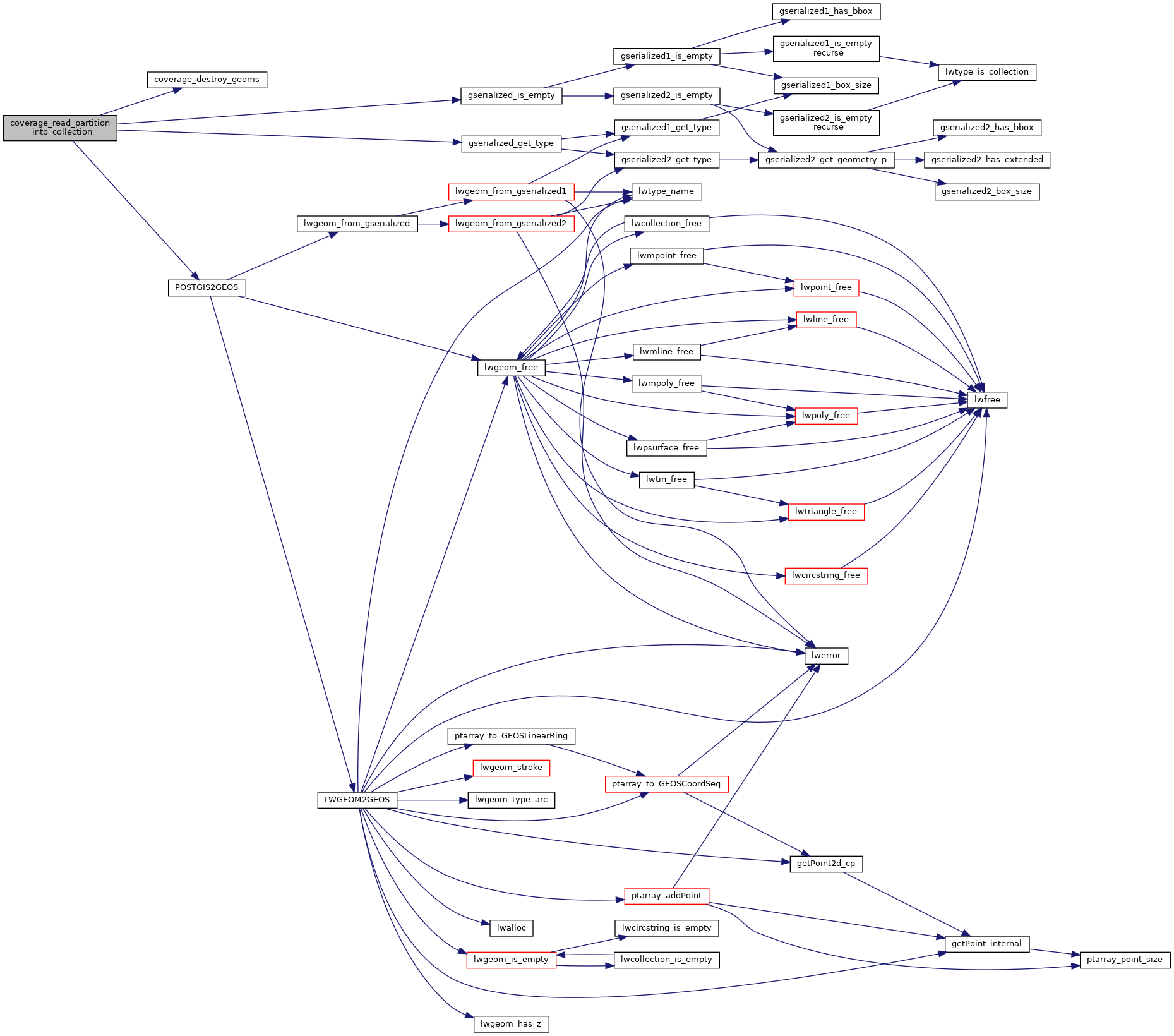◆ coverage_read_partition_into_collection()
|
static |
Definition at line 520 of file lwgeom_window.c.
int gserialized_is_empty(const GSERIALIZED *g)
Check if a GSERIALIZED is empty without deserializing first.
Definition: gserialized.c:152
uint32_t gserialized_get_type(const GSERIALIZED *g)
Extract the geometry type from the serialized form (it hides in the anonymous data area,...
Definition: gserialized.c:89
static void coverage_destroy_geoms(GEOSGeometry **geoms, uint32 ngeoms)
Definition: lwgeom_window.c:474
GEOSGeometry * POSTGIS2GEOS(const GSERIALIZED *pglwgeom)
Definition: postgis/lwgeom_geos.c:2857
Definition: liblwgeom.h:443
References coverage_destroy_geoms(), gserialized_get_type(), gserialized_is_empty(), coverage_context::idx, MULTIPOLYGONTYPE, POLYGONTYPE, and POSTGIS2GEOS().
Referenced by coverage_window_calculation().
Here is the call graph for this function:

Here is the caller graph for this function:
